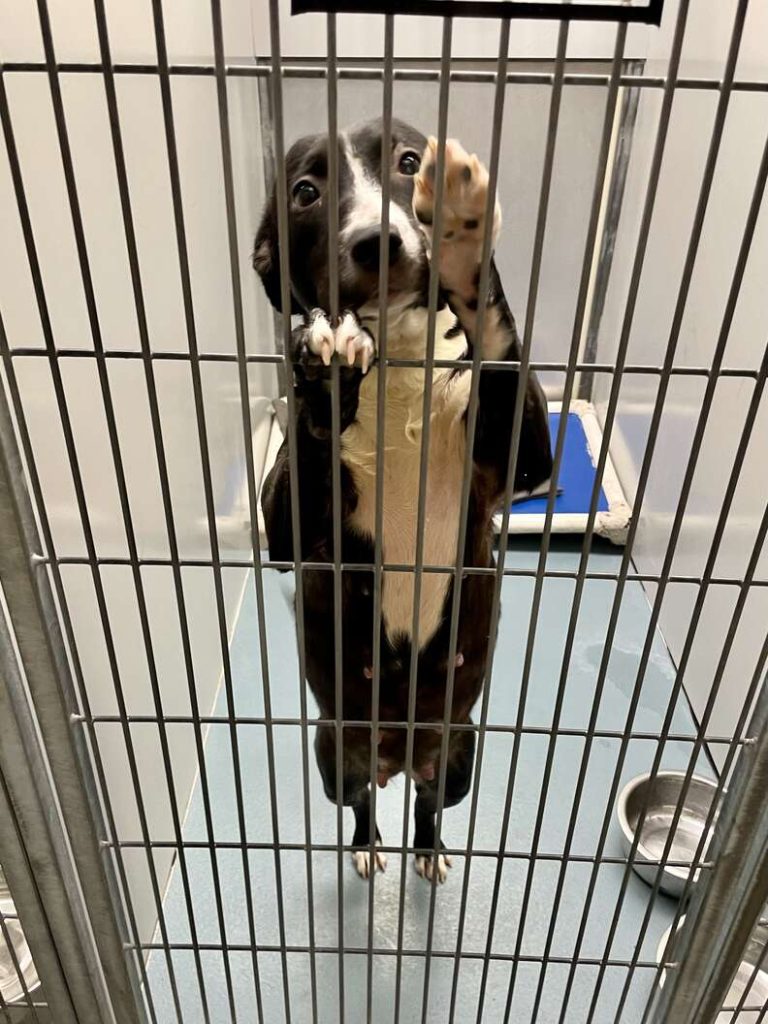The Influence of Social Media on Pet Adoption: Campaigns That Work

The Digital Revolution in Animal Adoption
The landscape of pet adoption has dramatically transformed with the advent of social media, creating unprecedented opportunities for animal shelters and rescues to reach potential pet owners. Platforms like Instagram, Facebook, and Twitter have become essential tools in promoting adoptable pets, turning them into stars in their own right. Heartwarming stories of transformations and success circulate widely, resonating with emotions and driving engagement. This digital age, rich with creativity and connectivity, is not only influencing adoption rates but also fostering communities dedicated to animal welfare.
Key Factors Driving Success
Several innovative strategies characterize effective social media campaigns for pet adoption. These approaches successfully harness the power of visual and interactive content, leading to increased outreach and engagement.
- Visual Storytelling: Quality visuals are essential for creating compelling narratives around adoptable pets. Photos that capture the quirky, playful behavior of dogs or the tranquil purring of cats can entice potential adopters. Videos, such as “A Day in the Life” with a shelter pet, help convey their unique personalities, making them more relatable.
- Influencer Partnerships: Collaborating with popular influencers or local celebrities can expand reach significantly. For instance, a well-known pet influencer sharing a post about a rescue animal can lead to thousands of views, potentially translating into adoptions. These figures have the ability to humanize a pet’s story and inspire their followers to consider adoption.
- Real-time Engagement: Maintaining an active presence through regular updates, live Q&A sessions, or virtual meet-and-greets fosters a community atmosphere. Engaging directly with followers allows shelters to answer questions, share updates about adoptable pets, and build connections, ultimately encouraging adoptions.
Case Studies to Consider
Examining successful campaigns provides insights into effective strategies for promoting pet adoption. Notable examples include:
- The #AdoptDontShop movement, leveraging social media to encourage individuals to consider shelter animals rather than purchasing from breeders. This campaign emphasizes the importance of giving homeless animals a second chance.
- Viral initiatives like the “Pet of the Day” challenges, which encourage shelters to spotlight specific animals daily, often leading to increased interest and rapid adoptions.
- Heartwarming stories shared by individuals on social media platforms, showcasing their journey with rescue pets. These narratives not only inspire others to adopt but also humanize the experience, making it relatable and compelling.
Statistics show that up to 30% of pet adoptions can be attributed to social media influence. In a nation where approximately 6.5 million companion animals enter U.S. shelters every year, understanding and leveraging this digital potential can significantly enhance the lives of countless animals. As we continue to explore the dynamics of pet adoption through social media, we uncover the power of community and storytelling. Learning from innovative campaigns can serve to shape our understanding of animal welfare and inspire us to take action in the realm of pet adoption.
DISCOVER MORE: Click here for effective training techniques

Strategies That Capture Hearts and Homes
The effectiveness of social media in pet adoption lies in its ability to create emotional connections between potential adopters and animals in need. Crafting compelling content that resonates with audiences is crucial, and successful campaigns often integrate a variety of strategies that prioritize engagement and outreach. Here are some essential elements that distinguish standout social media campaigns in the realm of pet adoption:
- Emotive Content: Sharing heartwarming photos and videos is fundamental. Pets with expressive faces or engaging antics attract attention and encourage shares. For instance, videos portraying rescue pets overcoming their past traumas or showcasing their personalities in fun settings can draw people in, making them eager to provide a nurturing home.
- User-Generated Content: Encouraging current pet owners to share their adoption stories can create a ripple effect. Seeing a friend or influencer post about their rescue pet may inspire their followers to consider adoption. Campaigns that promote hashtags like #MyRescueStory not only facilitate community involvement but also spread awareness about available animals.
- Limited-Time Promotions: Implementing time-sensitive events, such as an “Adoption Day” featuring reduced fees or special offers, can prompt immediate action. Social media alerts about these promotions can generate excitement and urgency, resulting in higher foot traffic at shelters.
- Interactive Campaigns: Utilizing polls, quizzes, or contests allows shelters to engage their audience actively. For example, a campaign where followers vote for a pet’s “name of the week” not only fosters interaction but also draws attention to the pets awaiting adoption.
Incorporating these strategies can lead to notable increases in adoption rates. For example, shelters that utilize a combination of engaging visuals and live interactions report improved community interest and participation. The reach of social media empowers organizations to showcase their pets far beyond their local communities, tapping into an audience that may not have considered adoption previously.
Understanding the Numbers
Data reinforces the impact of social media on pet adoption rates. According to recent studies, over 50% of pet owners in the U.S. reported that they found their adopted pet through social media channels. This statistic underscores the importance of maintaining an active and engaging online presence. Furthermore, many organizations have witnessed a direct correlation between social media activity and increased adoptions. For instance, after launching a dedicated social media campaign, one shelter saw a remarkable 40% rise in adoption inquiries within just a month.
These compelling numbers highlight the pressing need for animal shelters to invest in social media marketing as a vital strategy for modern pet adoption efforts. As we delve deeper into successful case studies, we will uncover more innovative tactics that have proven effective in connecting animals with loving homes, ultimately transforming the landscape of pet adoption.
| Advantage | Description |
|---|---|
| Broader Reach | Social media platforms provide organizations with the ability to reach a wider, more diverse audience, ensuring that their adoption messages resonate with potential pet owners. |
| Engaging Content | Visual storytelling through compelling images and videos of animals can create emotional connections that drive adoption interest and motivate action. |
| Community Building | Online campaigns foster community interactions, allowing potential adopters to share stories and testimonials that boost credibility and encourage others to consider adopting. |
| Targeted Advertising | Utilizing advanced algorithms, social media allows for targeted ad campaigns that can focus on demographics most likely to adopt, maximizing the effectiveness of outreach efforts. |
The power of social media in pet adoption campaigns is evident through its ability to engage audiences by utilizing creative content. By showcasing heartwarming stories and interactive content through platforms like Instagram and Facebook, organizations have the opportunity to inspire prospective pet owners. Moreover, the targeted advertising strategies employed by these platforms enable organizations to efficiently direct their messages to those actively seeking a new furry friend. The transformational effect of social media not only enhances awareness but also drives a cultural shift toward adoption as a first choice rather than an afterthought. As the love for pets continues to grow, engaging storytelling and community support on these platforms can play a critical role in shaping the future of pet adoption initiatives.
LEARN MORE: Click here for essential tips
Case Studies of Successful Campaigns
Analyzing the effectiveness of social media in pet adoption entails looking at specific campaigns that have delivered impressive results. A number of shelters and rescue organizations across the United States have successfully leveraged social media to not only increase visibility for adoptable pets but also engage their communities in a meaningful way.
One inspiring example is the ASPCA, which launched the “Adopt Don’t Shop” campaign on multiple social media platforms. By featuring stunning photography and captivating stories of shelter pets, they were able to connect with thousands of followers. Using targeted ads, the campaign reached demographics that were previously untapped, resulting in a significant surge in adoption applications, particularly for senior pets who often struggle to find homes.
Similarly, the Houston SPCA initiated a campaign called “#FureverHomeFriday” that showcases pets available for adoption every week. Each Friday, they post attractive photos of featured pets along with engaging backstories on their social media pages. This strategy has proven effective: according to shelter reports, this campaign alone has doubled their adoption rates on Fridays compared to other days. By creating a routine expectation of featuring pets, they maintain audience engagement while driving traffic to their shelter.
Innovative Collaborations
Collaboration has also emerged as a key strategy for successful social media campaigns in pet adoption. Partnerships with influencers or local businesses can amplify a shelter’s message significantly. The San Francisco SPCA partnered with local pet-related businesses and popular social media influencers to host “Adoption Events.” Potential adopters were encouraged to visit the shelter, meet the pets in need of homes, and participate in fun activities, all while documenting their experiences on social media. This created a buzz that not only attracted attendees but also significantly increased the shelter’s online followers, enhancing the overall exposure for the animals available for adoption.
Further emphasizing the power of creative partnerships, the Best Friends Animal Society collaborated with popular pet brands to launch the “No Kill Challenge” on social media, aimed at raising awareness around pet overpopulation and the importance of adoption. This campaign utilized video testimonials and shared success stories that appealed to viewers’ emotions, yielding a remarkable increase in engagement, with an impressive 60% increase in adoption applications during the campaign window.
Utilizing Analytics for Optimization
In today’s digital landscape, utilizing social media analytics can play a crucial role in shaping and refining pet adoption campaigns. Many animal shelters have begun analyzing their post engagement metrics, audience demographics, and ad performance to tailor their outreach effectively. For instance, the Albuquerque Animal Welfare Department utilized insights from their social media analytics to identify optimal posting times and content styles that resonated best with their audience. As a result, they experienced a 30% improvement in post interactions, leading to an increase in visitors applying to adopt pets.
Incorporating data-driven strategies into social media campaigns not only maximizes engagement but also aligns resources where they can achieve the greatest impact, making every pet’s story more likely to reach potential adopters. As shelters and organizations continue to evolve their strategies, a comprehensive understanding of analytics will undoubtedly play a pivotal role in shaping future campaigns.
DISCOVER MORE: Click here to learn about the latest trends in pet accessories
Conclusion: The Transformative Power of Social Media in Pet Adoption
The intersection of social media and pet adoption is a vibrant space where ingenuity meets compassion. As highlighted through various successful campaigns, organizations such as the ASPCA and Houston SPCA have effectively utilized visually captivating content and engaging narratives to draw in potential adopters. These strategies have transformed not just how shelters operate, but also how they connect with their communities. The rise of initiatives like #FureverHomeFriday and partnerships with influencers not only enhance outreach but also build a solid community base, fostering relationships that extend beyond mere adoption into lifelong commitments.
Furthermore, the integration of analytics into campaigning offers shelters a powerful toolkit for tailoring their messages and maximizing impact. By understanding audience preferences and behaviors, organizations can refine their strategies to create content that resonates deeply. The impressive increases in adoption applications, as demonstrated by the Best Friends Animal Society‘s campaign, further emphasize the need for shelters to innovate continuously in their approaches.
Ultimately, social media has revolutionized the landscape of pet adoption, providing a platform where organizations can harness collective goodwill and creativity to advocate for animals in need. As we look to the future, it is essential for shelters to remain adaptable, embracing new trends and technologies while focusing on the heart of their mission: finding forever homes for pets. The journey of an animal from shelter to home is not just a success story; it is an ongoing testament to the influence of social media in cultivating care, awareness, and action in the realm of pet adoption.


